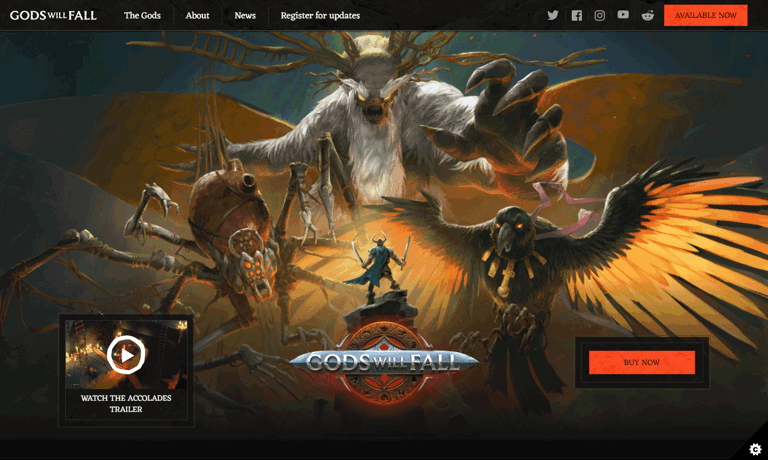As a product-focused, media-centric business, the primary goal when creating, producing and selling media is to get people using your product. Yeah, money is nice - but making money without having people actually use your product is extremely difficult.
With that in mind, retention is of paramount importance to any product life cycle. It's true for all kinds of software, but it's especially true for games. For multiplayer games, players are your life blood. For single player games, players are your fans, advocates, and repeat buyers. No matter what kind of game you're building, figuring out how to capture the attention of a player, and keep it, is essential.
And while making games is hard, making great ones is even harder. One critical distinction that often separates great games from good ones is how adept they are at retaining players.
In the world of games, one metric of choice when considering your retention strategy is known as Time To Fun (or TTF, for short). Today on the blog we're looking at TTF in more detail: what it is, how to measure it, and why you should consider it as part of your product strategy.
This blog is available as a video (embedded below), or as a normal blog post made out of written words (keep scrolling).
This blog is available as a video (embedded below), or as a normal blog post made out of written words (keep scrolling).
TTF! TTF!
Time to Fun is essentially a measure of how quickly a player can be onboarded. That is to say, how fast can a player go from clicking the button to start the game, to actually doing something they enjoy and can have fun with.
Games don't just compete with other games, they compete with all kinds of apps: Netflix, social media, and more. The longer your TTF is, the more likely you are to lose a player to a more enticing, fun-providing competitor.
How long should it take?
The best games have a TTF of under 60 seconds, especially on highly competitive platforms like mobile. But ultimately, it does depend on how invested a player already is, and how much time they might be prepared to put in based on their preconceived notions of what the game is or might offer them. If your game is 60 dollars and they've researched it, bought it, and waited for it to install - then they're probably likely to give you a bit longer to make your case.
So there's no right answer for every game, but one aspect is clear: Shorter is always better.
Reducing barriers
One of the best ways to improve your TTF is to reduce barriers. Some of these barriers (like loading screens) might be tough to eliminate, but perhaps they can be shortened. Others, like account creation, lengthy cutscenes and configuring lots of options, can be either removed, or moved to a more appropriate part of the user journey. When in doubt, try to drop the player straight into some action. The less steps it takes, the better.
Looking for an example? Look no further than Forza Horizon 4, which blends a short cutscene straight into a race: throwing players almost immediately into the middle of a high-octane, visually rich and exciting experience. The game has dozens of systems it could have introduced you to up front, including car buying, car customisation, open world exploring and more - but the very first thing they do is make you have fun.
Learn by doing
One of the biggest sins that some games commit is their tutorial. Lots of games need tutorials, because the game has concepts that aren't inherently intuitive, and it's nice to have your hand-held a little bit while you figure them out.
But the structure, content, and pacing of your tutorial is of critical importance. This isn't something to be glossed over. If your game has levels, the tutorial is perhaps the most important level of your entire game.
The best tutorials prioritise learning by doing. That is, rather than presenting lots of text to read, or videos to watch, they let you start doing the thing you're supposed to be learning how to do. Quick overlays, or contextual information presented in the environment, are low-friction ways to inject some guidance without interrupting the action too much.
A great example is Portal, which uses environmental design and humorous voice-over work to encourage players, and guide them on the tools they should be using. The beginning also doesn't feel like it's detached or in any way secondary to the 'main game'; it's presented as a seamless experience.
The hierarchy of complexity
The second thing that separates a good tutorial from a bad one is the hierarchy of complexity. Your tutorial should always start at the most simple elements, and then build on them towards things that are more complicated. Maintaining this hierarchy allows users to progress through a tutorial more quickly, and reduces the chance of them being put off.
The Super Mario franchise is the absolute epitome of this concept, often taking the logic of tutorials and applying it to the entire game: Each new world, from start to finish, comes with abilities. You're introduced to them, allowed to play with them, and subsequently, challenged to use them in a creative and interesting way. Over time, you build an incredible knowledge of the way these abilities work and can be used, without ever feeling overwhelmed by the amount of depth that there is.
Confidence is key
It's also important to build player confidence. If your tutorial ends, and a player feels uneasy or unsure whether they can really pull off the stuff they just learned, then the likelihood they'll churn into another game or app is increased. After all, other apps and games make them feel amazing. Your goal is to make them feel amazing too.
One of the best examples of this is Call of Duty Mobile, which sneakily puts players up against bots for the first few matches. It gives them names which look believably like real human accounts, and essentially sets you up for success in your first few matches. You will win most of your first few games, and feel like a champion. The more you play, the more these bots are replaced with real humans, until the entire game is full of real people. By then, you're hooked.
The extended experience
One last thing to consider, before we wrap up: Playing your game probably isn't the first engagement that a customer has with your game.
In all likelihood, they've seen it advertised. Maybe they've watched a trailer, seen it on social media, or found the listing on a popular games store.
While it might be a stretch to consider a Facebook ad as something a player could have fun with, a lot of the principles of TTF also apply to the broader, extended experience that every player goes through when they first encounter or come into contact with your brand.
With that in mind, focus on marketing efforts that feel like a seamless part of your game's tone and offering, and always be mindful that you want to quickly move from initial engagement, to captured and enthralled audience. And make it snappy! Your site should be quick to load, your trailer should be professionally hosted so players can watch it right away, and your social messaging should be short and to-the-point.

A gif demonstrating the load speed and contextual animation on the website for Gods Will Fall
If your marketing can delight users early on, you should do everything in your power to make that happen. It might just be the difference between a lifelong fan and a missed opportunity.
In summary...
There are hundreds of games (and other applications) available to your players, and keeping their attention has never been harder. By learning the lessons of popular, successful games and building with Time To Fun (TTF) in mind, you can give yourself the best chance of retaining players, building communities, and growing your fanbase.
Thanks for reading today's blog! If you liked it, have a click around, you might like some of our other articles. Want to get in touch? Fill in our contact form, or just send us a message on Twitter. Bye for now!
Additional info
Hat tip to @Tocelot on Twitter for his insightful Twitter thread


